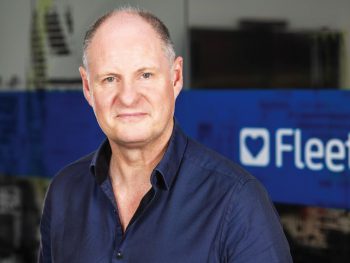Key predictions for the EV sector in 2024
EV Fleet World asks some of the UK’s electric vehicle specialists about their predictions for the next 12 months.
2024 will be the year of the EV
Andy Bruce, CEO of Fleet Alliance

Andy Bruce, CEO of Fleet Alliance
2024 will be the year that companies look to accelerate down the electrification route, as they seek to meet their own ESG agendas and address the environmental concerns of their employees. And they will be helped in achieving these ambitions by lower prices and greater supply of electric vehicles.
The vehicle manufacturers are once again building up stocks of vehicles after several years of shortage of supply, with good levels of many volume models. And, as they are bound by the Government’s target to produce 22% of their product mix as EVs in 2024, this means that EV supply will continue to increase.
As a result, the manufacturers now have to be more realistic about pricing, but reductions in list price, as we saw with Tesla, can distort the market. Discounting is the tried-and-tested route they will go down and already we are seeing some discounts over 30% in certain specific cases.
Another shot in the arm for EV production across Europe was the recent news of the EU and UK deal to extend the rules of origin for batteries for a further three years until 2027. We welcome this initiative as it means stability of parts supply is maintained and the threat of tariffs on EVs has receded for at least another three years.
All these factors combined add up to good news for our customers as they will mean lower rentals on EVs, making them more affordable along with the continued attractiveness of very low Benefit-in-Kind (BiK) tax rates. This continues to make electric cars very attractive from a cost perspective, especially when supplied through salary sacrifice schemes, which open them up to wider numbers of employees in all types of businesses at very advantageous rates.
The degree of pent-up demand currently in the market is also a strong reason for optimism in 2024. We, like many suppliers, are seeing above average levels of contract extensions with a running rate three times that of normal levels.
I liken this pent-up demand to a dam that is currently showing signs of leaking, but which may well see a more general collapse in the coming months, as customers cannot continue to extend their vehicles indefinitely. Salary sacrifice is the route that many will decide to go down.
Finally, we believe that 2024 will bring us all greater political stability and a gradually improving economic backdrop, which I’m sure we would all welcome.
A positive 2024 for UK EV drivers
Daniel Forsberg, marketing manager for EVSE at CTEK

Daniel Forsberg, marketing manager for EVSE at CTEK
2024 will be an exciting year of change for the UK’s growing number of EV drivers, with huge numbers of new public charge points installed and more charge points working more of the time.
EV drivers will no longer hope that a destination – such as a car park, a shopping centre, a hotel, fast food outlet or leisure venue – has working EV charging. They will expect it.
2024 will be the year when the UK’s millionth EV hits the road and when demand rises for used EVs. We expect the pace of expansion in new EV sales to continue to slow in 2024, as manufacturers strive to tempt buyers from the mainstream to follow the early adopters. But this slowdown will not become a reversal, EV sales – new and used – will continue to rise.
And the new and existing owners of EVs will see a fundamental shift in public charging availability. In December 2023, the UK’s 10,000th rapid/ultra-rapid charge point was installed, in a year when the overall public charging network grew by almost 50%. Tens of thousands more will be added in 2024.
2024 will also see operators of rapid and ultra-rapid public charge points strive to hit the Government’s rule that by November their networks must work 99% of the time. As well as reliability, the UK Public Charge Point Regulations 2023 also cover contactless payment, roaming, reporting, helplines, open data and pricing transparency. Newer EVs and charge points will also facilitate ‘plug & charge’ vehicle-to-charge point identification and billing.
We predict that artificial intelligence (AI) will fuel advanced predictive maintenance of charging networks, looking ahead for potential failures to address problems before they disrupt charging services. Real-time monitoring and management will also increase uptime, as will building in communication safety nets to enhance and protect connectivity.
Initiatives and trials by the energy providers and grid operators will continue in 2024, pushing forward the nation’s ability to smooth demand and transition further to renewable electricity generation and storage.
EV owners with home charging will enjoy more opportunities to integrate their EV and its battery into their home’s energy grid. Newer EVs and home charge points will more easily integrate the battery as a source of energy as well as consumption, saving money through timely bi-directional charging. Home generation, most notably through solar, will add to this rich mix of efficiency and cost-reduction plus stabilise the grid.
The year of EV charging software?
Modestas Gliaudelis, senior business development manager, Clenergy EV

Modestas Gliaudelis, senior business development manager, Clenergy EV
With charger availability largely accounted for with an incremental plan in place, 2024 will see an increased effort to improve the customer experience as the market moves from early adopters to early mainstream users. With EV charging software being purpose-built to help make the charging experience for EV drivers and charge point operators managing a network, we expect it to play a huge role in 2024’s EV infrastructure. As such, some of the trends we expect are as follows.
Contactless payment and e-roaming
Equipping EV chargers with contactless payment terminals is another way of improving the user experience of EV charge point sites and keeping drivers happy. In 2024, we will see an increase in the variety of payment solutions available.
With contactless payments, customers can charge their car, pay for the usage using any card, and drive off quickly. EV charge point software providers, working in collaboration with industry partners, can help charge point operators accept all types of contactless payments via touch screen terminals that provide billing and payment information.
Contactless payments not only improve the accessibility of EV chargers for drivers but allow charge point operators to monetise their chargers easily. And drivers will no doubt use their chargers again in the future.
When it comes to meeting e-roaming requirements, software providers are working on signing cross-industry deals with network providers to give their users access to a huge range of charge points across Europe.
Incorporating software into sustainability strategies
With net zero approaching, many organisations will be focused on tracking sustainability goals; and software is a key means to do that. Not only does it provide live reports on usage and carbon emissions saving compared to using ICE equivalents, it’s also a complete necessity for those managing a network of charge points, say across an organisation.
As more organisations become aware of the benefits early transitioners are seeing in partnering with software providers for their EV charging rollouts, in 2024 we can expect to see an increase in software’s profile and its subsequent incorporation as a key part of any sustainability plan.
Action needed on EV sector myths and political landscape
Chris Pateman-Jones, CEO of Connected Kerb

Chris Pateman-Jones, CEO of Connected Kerb
The move from early EV adoption to mass market has seen misinformation reach new heights. Underpinned by today’s 24-hour news cycle, misinformation spreads far and wide in no time.
There is a real need for the industry to unite to tackle mistruths and bring clarity to consumers. Otherwise, we’ll witness a sea of confusion amongst new and prospective EV drivers, which will inevitably have a negative impact on uptake.
Uniting the industry will therefore be key for 2024. The new industry body, ChargeUK, has already laid the groundwork for a stronger, more collaborative EV industry, whilst bringing together government and other key stakeholders to accelerate overcome key challenges and drive forward the EV transition at the pace and scale required to reach net zero.
A supportive political environment for EVs in 2024 will also be vital to transform the UK’s transport system at the pace and scale science demands. The electric vehicle transition has become a frontline political issue over the past year – from pushing back the phase out of new petrol and diesel cars to 2035, to the likes of ULEZ.
But political controversy doesn’t change the facts – the EV transition is well underway and accelerating at pace. EV sales have continued to soar month on month, and the ZEV mandate, which came into place this month, will see car manufacturers sell an increasing number of EVs every year. So, charge point operators, such us at Connected Kerb, need to remain laser-focused on providing the reliable, affordable, and convenient charging infrastructure that’ll make 2024 the best year yet for EV drivers across the UK.
A call for a realistic approach to EV fleet adoption
Adam Hall, energy services director at Drax Electric Vehicles

Adam Hall, energy services director at Drax Electric Vehicles
While 2023 was a positive year for the EV industry, 2024 will be somewhat more challenging.
The tough financial climate last year has meant that many fleet-operating businesses, which have long been the driving force behind the nation’s transition to electric, have had to cut back on larger-scale sustainability projects. This isn’t to say that they’re any less determined to make a real difference towards net zero; it just means that they’ll need to recover from the financial hits of the past few years before committing to high-investment projects.
However, as we saw during the pandemic, the EV industry is extremely resilient to economic ups and downs. As such, we should fully expect more major milestones over the next 12 months, particularly as we see the rollout of lower-cost models.
EVs to become more accessible in 2024
Andrew Leech, founder and managing director of Fleet Evolution

Andrew Leech, founder and managing director of Fleet Evolution
2024 will see EVs becoming more accessible to a wider audience with a market-defining benchmark likely to be breached for the first time.
Citroen will launch the e-C3 supermini in the spring with a list price of around £22,000 and a range of 199 miles, billing it as “the first European affordable electric car”. This will make owning or driving an EV more widely accessible because, in salary sacrifice terms, the e-C3 will probably cost around £250 net with an all-inclusive package and no deposit. This will open up the market to a new range of buyers or lessors and go a long way to dispelling the myth that EVs are expensive and only for the well-off.
Supply of EVs in general continues to improve all the time as manufacturers, especially the Chinese, launch new models and stocks of available models builds up. We are now looking at lead times of just three months, compared to 12-18 months during the global semi-conductor shortage, and manufactures are offering increasing support, typically in the region of 8-10%. However, we are seeing some models from premium brands attracting discounts as high as 30%.
This year is also likely to bring a continued increase in the national network of fast chargers. The latest figures from ZapMap show the infrastructure is growing all the time and will give greater reassurance to those buyers who are contemplating making the switch to electric but are worried about access to sufficient chargers.
At Fleet Evolution, we would also like to see 2024 as the year when the Government gives its wholehearted support to what we view as the Second Industrial Revolution and the move to electric motion.
That means greater investment in renewables such as wind and solar, a greater commitment to expanding the charging network still further, especially in urban areas, and in technology such as lamp-post charging.
And we’d like to see increasing numbers of apprentice schemes offered to young people to encourage them to work in this exciting new industrial landscape.
Fleets investing in technology and IoT platforms to lead way in EV switch
Philip van der Wilt, SVP and GM EMEA of Samsara

Philip van der Wilt, VP EMEA, Samsara
Physical operations will continue to be challenged by the uncertainty surrounding fleet electrification and the need to double down on fuel efficiency.
Businesses are waking up to the fact that it’s not petrol, diesel or electricity that powers fleets – it’s data.
Those who have already invested in technology and IoT platforms to manage their fleets are already better off. Fleets that have already invested in connected data platforms are better able to identify which routes, vehicles, and tasks are best suited to the electrification of their fleets.
They’re also using these same fuel-agnostic systems to identify other technologies that will lead to fleet decarbonisation.
It’s now up to the rest of the industry to play catch-up or risk being hit with a double whammy – falling behind on electrification plans while being unable to manage sprawling fuel costs.c
Jordan Brompton, co-founder and CMO of Myenergi

Jordan Brompton, co-founder and CMO of Myenergi
While it’s fair to say that limited supply has proven somewhat of an unexpected barrier to adoption in the UK’s transition to electrification, supply chain pressures experienced over the past few years are finally beginning to ease. As a result, OEMs are catching up on production deficits fast, with finished vehicles now rolling off production lines at record rates.
As we head into 2024, we’ll likely see three things happen quite quickly. Firstly, EV availability will rapidly improve. Compared to the long lead times experienced over the past 18 months, in particular for the luxury end of the market, waiting lists will shrink and lead times will fall accordingly. With a number of new brands looking to penetrate the UK market, this will put pressure on the legacy OEMs.
Secondly, with supply beginning to match demand, production efficiencies will continue to increase and prices will resultingly fall – bringing EVs far more in line with ICE-powered cars from a purchase price perspective – a major positive for the consumer, as well as the wider transition to electrification. We’ve already started to see this across the leasing industry, with many electric models now almost at price parity with their petrol or diesel counterparts.
Finally, as the transition to electrification continues to accelerate, we’ll see vehicle manufacturers further increase their spend on EV R&D and cut investment into ICE models almost entirely. This will most likely be the final nail in the coffin for traditionally fuelled vehicles, with consumers unwilling to purchase dated technology.
These scenarios, alongside continued national investment into the public charging network, will see barriers to adoption crumble and registrations soar. This is positive news all round.
EV adoption to accelerate but could lingering doubts hamper growth?
Dunstan Power, managing director, Versinetic and the engineering team at Versineti

Dunstan Power, managing director, Versinetic
EV sales are expected to continue rising steadily in 2024, likely increasing around 50-70% year-over-year. This growth comes despite economic challenges facing consumers like high energy prices and cost-of-living pressures.
We expect that economic issues will only temporarily slow, not reverse, EV adoption trends. Once economic shocks stabilise, fundamental factors underpinning EV growth will persist. Government policy supportive of EVs provides tailwinds in many markets too.
Specifically in the UK, a change in political leadership could accelerate EV sales growth. Any new government will likely emphasise EVs more to meet carbon reduction targets. The current administration cut EV subsidies and proposed new taxes, creating temporary uncertainty. A policy shift could quickly boost consumer confidence.
Moreover, once emerging from the current economic crisis, consumers will refocus on long-term fuel savings from driving electric. Both energy security and climate change considerations favour EVs. As more affordable EV options launch too, sales should rebound strongly by 2024.
We predict that every month moving forward, battery electric vehicles (BEVs) will outsell hybrid electric vehicles (HEVs). This transition officially began in January 2023. From now on, BEVs will be the second highest selling powertrain behind mild hybrid petrol cars.
As BEV options diversify, and prices continue falling, consumers look set to switch away from petrol vehicles more rapidly. Volvo’s decision to cease diesel car production in 2023, for instance, foreshadows moves by other automakers to come. Diesel’s decline will free up even more market share for BEVs to capture.
The rapid growth of electric vehicles faces a substantial challenge from the proliferation of misinformation on social media and other platforms.
As such, the EV industry is likely to make curbing anti-EV rhetoric a top priority over the coming months. Far more advanced technological solutions are needed to promote truth and combat falsehoods. Failure to get misinformation under control risks slowing the transition to electric transport significantly.
Specific anti-EV misinformation such as doubts over electric grid capacity must be a focus too. Grid experts have prepared for rising EV numbers for years. The capacity exists, it just needs communicating properly to counter persistent myths.
Ultimately, misinformation indeed threatens to delay EV adoption. However, proactive efforts from industry leaders and policymakers can both provide correctives and slow the spread of false narratives. Prioritising the battle against misinformation will ensure EV growth stays on track through 2024 and beyond.
Optimism for global electric vehicle sector
Charlie Jardine, CEO of EO Charging

Charlie Jardine, CEO of EO Charging
The EV market is poised for a surge in momentum in 2024, driven by falling costs, technological advancements, and robust government support globally.
Consumers, businesses and the public sector are switching to EVs in ever-more significant numbers, with 14 million EVs expected to be sold globally in 2023. This represents a 35% year-on-year increase despite ongoing concerns about the scale and quality of public charging infrastructure.
The United States will strengthen its position as a global frontrunner in accelerating EV adoption, surpassing European counterparts in government-led investment.
In the UK, industry commitment to net zero progress will continue, despite government delays, with energy companies launching free EV charging schemes to try and help maintain momentum. With the impending general election in 2024, we can expect a robust debate on greener transport policies, hopefully making the case for accelerating support for electric adoption even stronger for future governments.
The year ahead will also increasingly highlight the role of energy management solutions in helping to meet surging EV demand. Load management and battery storage innovations are poised to take centre stage. It’s becoming clear that open standards are now critical for effective infrastructure. As we navigate through 2024, collaboration through open-source standards will be pivotal in propelling the EV industry forward, promising a future of simplicity, reliability and accessibility.

